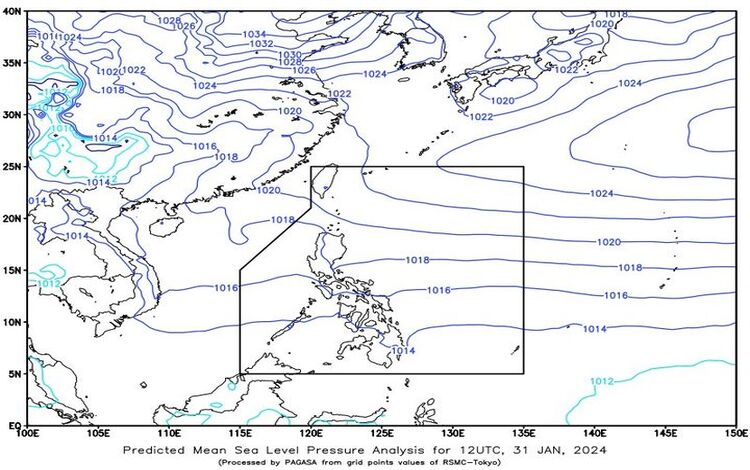Issued today at 4:00 PM
The weather outlook for the Philippines reveals a diverse range of conditions due to the prevailing Northeast Monsoon impacting Luzon and Visayas, coupled with a Trough of the Low-Pressure Area (LPA) influencing Mindanao.

Caraga, Davao Region, and SOCCSKSARGEN: Cloudy skies with scattered to widespread rains and thunderstorms are anticipated in these regions. The Trough of LPA is responsible for these weather conditions, and residents are advised to be cautious as heavy to intense rains may lead to possible flash floods or landslides.
Central Visayas, Southern Leyte, and the rest of Mindanao: Similar to the aforementioned areas, Cloudy skies with scattered rain showers and thunderstorms are expected. The Trough of LPA remains the primary cause, and the populace is urged to stay vigilant against moderate to heavy rains, which could trigger flash floods or landslides.
Cagayan Valley, Aurora, Quezon, Bicol Region, and the rest of Eastern Visayas: Cloudy skies with light rains are predicted due to the Northeast Monsoon. Fortunately, this weather pattern is not anticipated to have any significant impact on the mentioned regions.
Metro Manila and the rest of the country: Partly cloudy to cloudy skies with isolated light rains are projected for Metro Manila and the rest of the country. The Northeast Monsoon is identified as the influencing factor, and these conditions are not expected to result in any significant impact.
Wind and Coastal Water Conditions:
Eastern sections of Southern Luzon, Visayas, and Mindanao: Strong winds blowing from the Northeast to the North are expected in these areas. Coastal waters will be rough with waves ranging from 2.8 to 4.0 meters.
Northern Luzon: Moderate to strong winds coming from the Northeast to the East are anticipated in Northern Luzon. Coastal waters will be moderately to roughly disturbed, with waves ranging from 1.2 to 3.4 meters.
Rest of the country: Moderate to strong winds from the Northeast to the North are projected, affecting the entire country. Coastal waters will experience moderate to rough conditions, with waves ranging from 1.2 to 3.4 meters.

Regular monitoring of official weather updates is crucial to ensuring the safety and well-being of communities throughout these diverse weather conditions.
